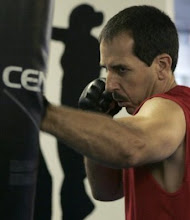Failure Training by John Whitman
Any Krav Maga instructor worth his salt knows that we are making a mistake if we just train techniques. Techniques have to be applied under stress, during drills and in scenarios that come as close as possible (given logistics and safety issues) to reality. This is a basic tenet of our training. “Success” for our students can’t be measured by their understanding of the technique…to the extent that it can be measured at all, it has to be measured in their ability to perform that technique adequately under extreme stress.
But what happens when they fail? What tools or training are we giving them when the technique doesn’t work? When the gunman pulls back on the gun too fast for us, or we fail to trap the knife arm? This is a worthwhile topic for discussion and, in my opinion, a totally legitimate area of training that many of us might not be exploring. As instructors, we should ensure that our students training includes real-time reactions to situations where our vaunted techniques get fucked up.
The obvious (and very Krav Maga-like) solution is aggressiveness. If you miss the gun during Gun From The Front (for example), burst in, catch the gun any way that you can, and counterattack like a madman until the threat is neutralized. But I want to give me students a basic strategy for how to burst in (all call this family of defenses my “Oh shit” defenses…not sure how I’m going to publish that). Once they understand the defense and can execute it aggressively, I want them to experience failure and react aggressively and decisively to that situation. I build into the training drills moments of flawed technique or extra-sharp attacker reactions and make the defenders deal with it.
There is a downside to this training. I can almost guarantee the following: if you incorporate drills where the defender must attempt one technique, fail, and then transition to some other movement, at least some of your students will cheat the first technique in order to prepare for the second. This is obviously unacceptable. They must make the initial defense decisively and aggressively…and THEN make adjustments on the fly if things don’t work out. (Can you think of a better metaphor for life?)
This last observation begs the question: when in training do we incorporate these sorts of failure drills? If we introduce them too early, then we destroy the student’s confidence in the basic technique. A good rule of thumb is to let the student train on the basic technique until they have a good, solid understanding and can execute it well under stress. Once they have that ability, start pushing the envelope. Introduce them to real-life scenarios where failure is certainly a possibility, then give them tools to use in those situations.
Obviously, we must start with basic techniques and principles—not simply because those techniques and principles are inviolate, but because those tools allow students to act decisively and aggressively, and it is decisiveness and aggressiveness that will safe their lives. Once they have those basic ideas, they must transfer that decisiveness, they must use that aggressiveness, during higher stress situations that are outside their comfort zone. When we do that, we are bringing them a greater measure of safety.
Subscribe to:
Post Comments (Atom)



No comments:
Post a Comment